GVC’s Bayou Favorites

by Lexcie Lewis, Special Sections Editor
Vacation Like a Local
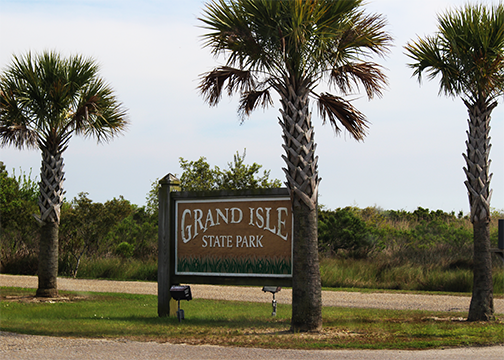
by Lexcie Lewis, Special Sections Editor When summertime rolls around, locals head to their home away from home, Grand Isle. Louisiana isn’t known for having many beaches so whether it’s fishing, camping or just laying out by the water, the small island of less than 800 residents is the ultimate Cajun getaway. “I love coming here because even with a large family, everyone can be together the entire vacation unlike at a resort, says Elsie Dabie who has been visiting the island for over 20 years. “You can finally put your phones down and just enjoy each other’s company.” Grand Isle is a family friendly vacation spot where all the locals go. Large groups or families can rent a camp, which is just a house that’s on stilts to avoid flooding. While many local families own their own camps, others rent them out to locals and tourists. Camps can range from a two bedroom to an eight-bedroom house, which is perfect for large families. “I ended up coming for vacation and staying permanently,” says Ronnie Sampey, a Grand Isle resident of more than 35 years. “I eventually built my own camp and I rent it out during the summer.” Golf carts can also be rented and be used as the main vehicle. Grand Isle passed an ordinance in 2014 allowing people to drive golf carts on the road as a vehicle. Grand Isle Tourism Commissioner Louise Lafont says they’ve wanted to allow golf carts on the roads for a long time. “It’s hard for families, especially with small children to get from one place to another. Having golf carts makes it easier for families to load up the kids and go. The beach is across the street so you don’t have to lug your stuff back and forth.” Lafont says her main goal is to make everyone feel welcomed. She’s not originally from Grand Isle she grew up in Caminada, a town next to Grand Isle. She slowly fell in love with the island and is now a permanent resident. She says that she has a special place in her heart for every visitor, especially the “snowbirds,” or what locals call people from colder northern states that visit Grand Isle and become locals themselves. Twenty-three percent of the population was once a tourist that has since decided to stay. “No matter where you’re from you’re like family to me,” she says. “I’m going to treat you that way and I never forget a face.” Louise makes sure that having each guest that comes on the island sign a guestbook. This allows her to meet each guest personally and keep in touch with them beyond their stay. If a guest needs anything even just someone to talk to she’s right there. “My life is forever changed by these people.” She says. “I have friends from as far as Canada that have influenced me and made me love this job even more. Grand Isle is much more than just an island, it’s home to people for hundreds of years, people who have lived off the land and water, raising their families and creating a unique culture together. Grand Isle Tour Sources: Louise Lafont, Grand Isle Tourist Commissioner gave the history, traditions, and status of Grand Isle through an interview Welcome Louise Lafont, Tourist Commissioner, is preparing for Grand Isle to be considered for the Cleanest City. Mr. Norris, a resident, cleans the beaches year round. Bon Jour Walking into the Grand Isle Commissioner’s office, this is the first thing you see. Reflecting the attitude locals have towards all visitors. Drink the Wild Air, Swim in the Sea The guestbook, logging visitors from California to Canada. The Dome The butterfly dome is a safe haven for butterflies, with a donation box by the entrance for visitors to contribute. Coast Guard Station At the end of the Island is a Coast Guard Base. State Park Camping at Grand Isle State Park is a great alternative to renting a camp, it’s the cheapest way to vacation on the island, it offers clean bathrooms, and a starry sky at night. Pirate’s Cove Landing Gated communities are a frequent site. A Sneak Peak Looking through the gate, there are expensive boats and million dollar camps that are only occupied half the year on average. Blue Moon Over Grand Isle Renting out camps is a common practice for those who don’t stay year round. Beach Apartments An alternative to renting a camp. Hurricane Hole Restaurant The fancy restaurant on the island. Hurricane Hole Hotel The camp feel, with hotel amenities. Presidential Palace You and 20 of your closest friends will have a presidential experience. A Boat Riding Bayside Driftwood Throughout history, Grand Isle residents have carved their initials into pieces of driftwood they want to claim. Others then know not to disturb the driftwood and that it’s already spoken for. What’s Left Some never rebuilt after Katrina hit. Island Mardi Gras Stored busses and floats for Mardi Gras is an ever present reminder of the attitude of locals have- laissez les bon temps rouler. Beach Access There are 19 public points of entry to the beach up and down the island. Watching Birds Birdwatching is a common activity, with the Grand Isle Migration Celebration in April. Jetties In an attempt to prevent erosion, rock jetties have been placed off the coast. It has been successful so far as it has changed the current, and planning has begun to place them all the way up the island.
Up The Bayou vs. Down The Bayou
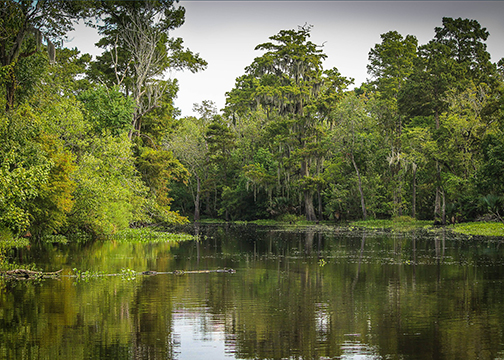
Cajun Food Fails
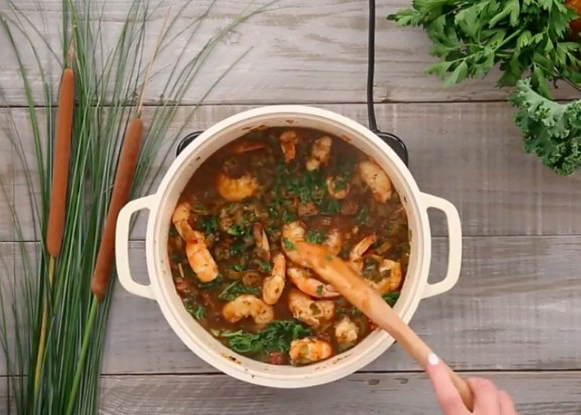
by Hannah Grigsby, staff photographer
Choot ‘Em // Bayou Stereotypes
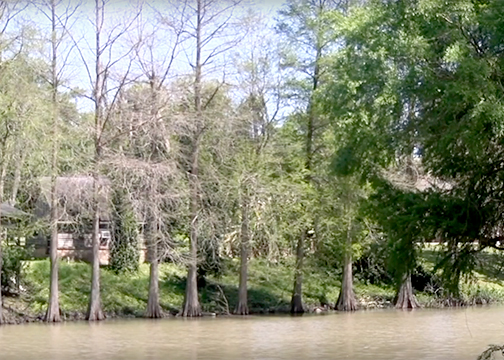
by Wes Barnett, staff videographer
Laurel Valley Plantation
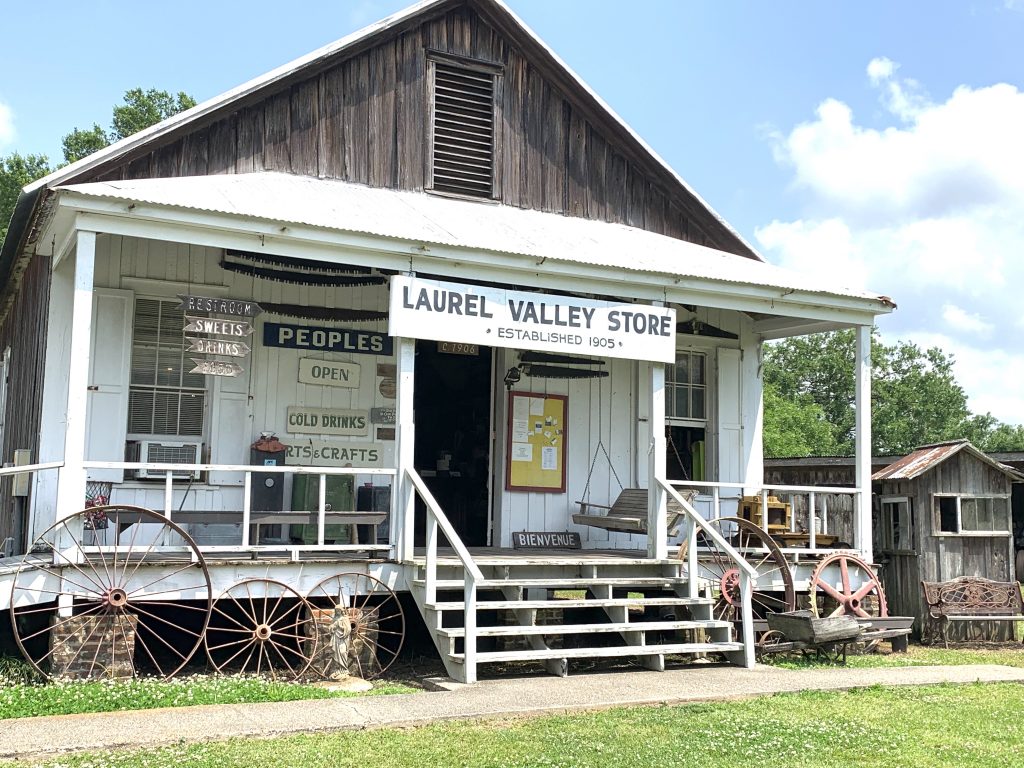
by Morgan Ivers, special sections Ghost stories and slave quarters come to mind when thinking of plantations. But are those legends actual history? And, what are the real stories of these historical complexes? Laurel Valley Plantation, one of the largest surviving sugar production and manufacturing complexes in the United States, is located right here in South Louisiana and is one of those places steeped in stories. “Some people have seen what might appear to be a ghost in the store,” says Dr. Paul Leslie, a local historian and history professor at Nicholls State University in Thibodaux. “There was a person who was killed right here at the end of this counter, with an axe hammer.” Although at the time of that barroom brawl the store was serving as a bar. Before the 1930s, Laurel Valley was a world within itself. People lived, worked, worshipped, and died within the confines of the plantation. They could buy supplies at the plantation store, which is still open today, and educate their children at the plantation school. Right from the start, Laurel Valley was different from other plantations because it offered more amenities to the members of its community. “People tend to associate black workers with plantations, but in fact, for most of Laurel Valley’s existence it had white workers,” says Leslie “The majority of the cabins in the back were occupied by white sugar cane workers.” The plantation itself has had a variety of owners, but most impactful were J. Wilson Lepine, Sr. and Frank L. Barker. In 1873, they expanded the land to serve as the sugar mill. “We’ve had a lot of events out here, between slaves, Chinese, Italian, Irish and Acadian field workers,” says Paul Leslie “Each one of those groups had more than enough reason to come back and haunt civilization today.” And while most locals agree, Alicia Delcambre of Thibodaux says, “but I’m sure if you were to go there with an inkling of suspicion, you’d be sure to have the hairs on the back of your neck stand-up.” Laurel Valley is a historical representation of the sugar production industry in the deep South. The community around the Thibodaux area needed the resources that the plantation was offering, including the income it was providing. This time is what came to be known as the “sugar boom.” Between 1890-1924, Laurel Valley enjoyed a period of growth and prosperity. Today, there are 76 surviving buildings including a sugar mill ruin, the grinding mill, the worker’s houses, a church, and the store. Beginning after the Civil War, the towns of Kramer, Choupic, and Chackbay were becoming overcrowded and began running out of jobs. Men used this as an opportunity to come to Laurel Valley to work. “The plantation consisted of 301 workers, but after WWII we started to have machinery replace the workers and today there are only four,” says Clifton Theriot, archivist and associate professor at Nicholls. In general, locals around the Thibodaux area all say the same thing when asked what they know about Laurel Valley, “Isn’t that place haunted?” Of course experts like local historian Paul Leslie say that’s not true. “A reflection in a window or a gleam of moonlight off the fog can easily convince someone who is looking hard enough that they’ve seen a ghost, especially when they’re surrounded by hundreds of years of history,” says Leslie. Not that he hasn’t had his imagination tested himself. While working around the shop late at night, strange noises have raised a hair or two on his neck, Leslie said. Especially considering the museum store was once a beer parlor and the site of a brawl that left one man dead. But he remains unconvinced. Since Laurel Valley Plantation opened in 1830, the experiences have yet to come to a halt as the general store is still open every day, and a small petting zoo visitors can go to. They offer tours of the plantation with historian Paul Leslie and they host an annual arts and craft spring festival. For more information, look online at facebook.com/laurelvalleyplantationstore where they update their page frequently or call at (985) 446- 7456. by Sydney Moxley, staff videographer
Talk Like a Local
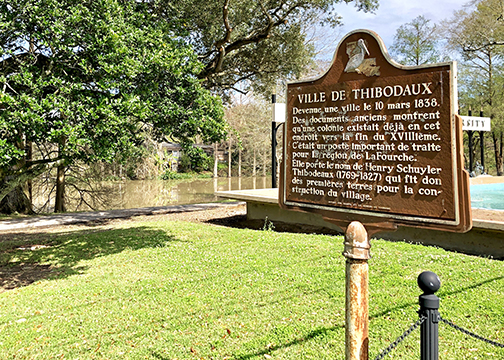
Eat Like a Local
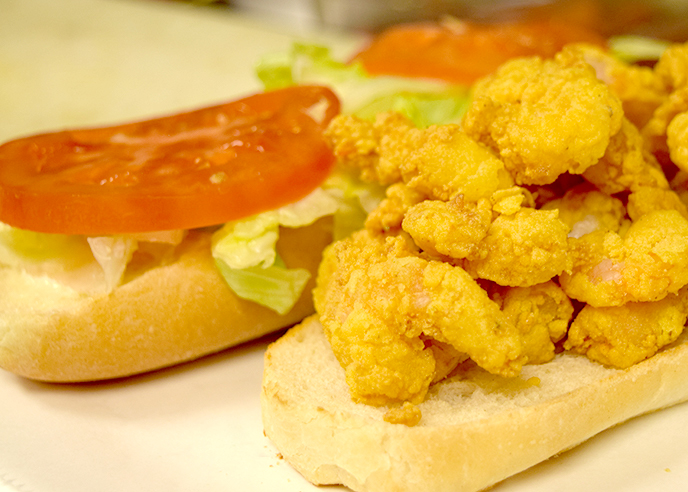
These recipes were chosen by their versatility. Cajun food is not the easiest to make and according to Chef Patrick Beeson, most people don’t follow a recipe when cooking which makes it difficult to replicate. These recipes chosen can be easily substituted for ingredients commonly found across the country. These are some of the classic Cajun foods to eat like a local. recipes Muffuletta Prep Time15 min Yield4 INGREDIENTS 5 ounces pimento-stuffed olives (1 cup), sliced, plus 2 tablespoons of liquid from the jar 6 ounces chopped giardiniera (pickled Italian vegetables) (1 cup), plus 1 tablespoon of liquid from the jar 2 tablespoons drained capers plus 2 teaspoons of liquid from the jar 3 ounces pitted Calamata olives (1/2 cup), sliced 2 1/2 teaspoons minced garlic 1 tablespoon minced shallot 1 teaspoon dried oregano 1 teaspoon dried parsley 1 pinch of crushed red pepper 1/2 cup extra-virgin olive oil 1 large loaf seeded Italian bread (about 1 1/4 pounds), split 1/4 pound sliced fresh mozzarella 6 ounces sliced capocollo or prosciutto 1/4 pound sliced Genoa salami 1/4 pound sliced mortadella 1/4 pound sliced mild provolone cheese Peperocini for serving Preparation 1 In a medium bowl, stir the pimento-stuffed olives with the giardiniera, capers and their respective liquids. Add the Calamata olives, garlic, shallot, oregano, parsley, thyme and crushed red pepper. Stir in the olive oil and let the mixture stand for 1 hour. 2 Open the Italian bread on a work surface. Spoon the olive salad on both sides of the bread and spread evenly. Arrange the mozzarella slices on the bottom half of the bread, then top with the capocollo, Genoa salami and mortadella. Arrange the provolone cheese on the top half of the bread, covering the olive salad completely. Carefully close the sandwich. Wrap the sandwich tightly in plastic and let stand for 30 minutes or up to 2 hours. Cut the sandwich into 8 pieces and serve peperoncini on the side. Shrimp & Grits Prep Time15 min Cook Time25 min Total Time40 min Yield4 INGREDIENTS 4 cups water salt and pepper 1 cup stone-ground grits 3 tablespoons butter 2 cups shredded sharp cheddar cheese 1 pound shrimp peeled and deveined 6 slices bacon chopped 4 teaspoons lemon juice 2 tablespoons chopped parsley 1 cup thinly sliced scallions 1 large clove garlic minced Instructions 1 Bring water to a boil. Add salt and pepper. Add grits and cook until water is absorbed, about 20 to 25 minutes. Remove from heat and stir in butter and cheese. Rinse shrimp and pat dry. Fry the bacon in a large skillet until browned; drain well. In grease, add shrimp. Cook until shrimp turns pink. Add lemon juice, chopped bacon, parsley, scallions and garlic. Sauté for 3 minutes. Spoon grits into a serving bowl. Add shrimp mixture and mix well. Serve immediately. Jambalaya Prep Time20 min Cook Time25 min Total Time45 min Yield4 INGREDIENTS 1/2 pound mild smoked pork sausage substitute high-quality pork sausage 1/2 pound boneless skinless chicken thigh meat 1 1/2 pounds onions diced 2 tablespoons minced fresh garlic 1 pound tasso cubed substitute smoked ham 3/4 tablespoon whole fresh thyme leaves 3/4 tablespoon chopped fresh sweet basil leaves 1/2 tablespoon coarsely ground black pepper 1/2 tablespoon white pepper 1/2 tablespoon red pepper flakes 1/3 gallon chicken stock 1 1/4 pounds long-grain rice 1 tablespoon freshly chopped curly parsley leaves Instructions 1 The most important thing is to use the right equipment: a 2-gallon cast iron Dutch oven and a large stainless steel chef’s spoon. Use high heat to preheat the Dutch oven and add the sausage. Using a chef’s spoon or large spoon, constantly move the sausage from the bottom of the pot. Be careful not to burn the meat. Add the thigh meat and brown the chicken on all sides. Again use the spoon to scrape the meat from sticking and burning to the bottom of the pot. Browning the sausage and chicken meats should take 20 minutes. Be careful not to overcook the thigh meat to the point that it shreds. Lower the heat to medium and add the onions and garlic; sauté for about 15 minutes or until the onions are very limp and “clear”. Scrape the bottom of the pot to remove all the “graton”. This is where the jambalaya gets its distinct brown color and taste. Add the tasso, thyme, basil and black and white pepper. Simmer over low heat for 10 minutes. This will give the seasonings time to release their oils and flavors. Add the rice, reduce the heat to medium and gently break up the rice. Using the stainless steel paddle, continue to insure that the rice is not sticking to the bottom of the pot. After about 5 minutes, fold in the parsley. Continue to scrape the pot to insure that no rice sticks to the bottom. When the jambalaya returns to a boil, reduce heat to the lowest possible setting and simmer, covered, for at least 25 minutes. Do not remove the cover while the rice is steaming. If Manda’s brand sausage is not available, any lean smoked sausage can be substituted. You may have to remove any excess grease from the pot after frying down an unknown sausage. If no stocks are available, then chicken soup base can be used. Be careful with your seasoning, as bases are usually full of salt. The jambalaya is best when served directly out of the cast iron pot. Shrimp Po’boy Prep Time15 min Cook Time10 min Total Time25 min Yield4 INGREDIENTS 1 pound shrimp (16 count per pound), peeled and deveined salt Freshly ground black pepper 2 cups flour 1/4 cup water 2 cups cornmeal Tabasco substitute with Franks French bread substitute with ciabatta To assemble Shredded lettuce To assemble Tomatoes To assemble Instructions 1 For the fried shrimp: Preheat oil in fryer to 360 degrees. Season the shrimp with salt and pepper. Season the flour with salt and pepper. Dredge the shrimp in the flour. Make an egg wash
